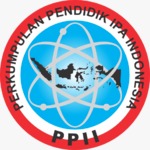Validity and Reliability Analysis of Science Modules Using Problem-Based Learning Models Based on Ethno-STEM Assisted by Augmented Reality
DOI:
https://doi.org/10.29408/kpj.v9i2.31825Keywords:
validity and reliability, science module, problem based learning, ethno-STEM, Augmented RealityAbstract
This study aims to analyze the validity and reliability of a Problem-Based Learning (PBL)-based science module integrated with the Ethno-STEM approach and assisted by Augmented Reality (AR) on the Motion and Force material for seventh-grade junior high school students. The module was developed as an innovative effort to improve the quality of science learning by linking local cultural contexts and the use of technology. The research method used includes validity and reliability testing involving seven expert validators, consisting of four lecturers and three science teachers, who assessed the feasibility of learning documents with five assessment scales, including the Learning Objective Flow (ATP), Learning Implementation Plan (RPP), Teaching Module, and Student Worksheet (LKPD). Validity was analyzed using Aiken's V formula, and the results of the analysis showed that all components obtained V values between 0.75 and 1.00, which was categorized as valid. Meanwhile, the inter-rater reliability test using the Intraclass Correlation Coefficient (ICC) showed an ICC value between 0.753 and 0.947. This indicates that the developed module has excellent inter-rater consistency and good to very good reliability. Therefore, this PBL-based science module, integrated with Ethno-STEM and AR, has been proven valid and reliable for use in the learning process at the junior high school level, making it a reliable learning resource.
References
Aiken, L. R. 1985. “Three Coefficients for Analyzing the Reliability and Validity of Ratings.” Educational and Psychological Measurement 45(1):131–42. doi: https://doi.org/10.1177/0013164485451012.
Amanah, P. D., Al Qayyim, T. M., Jauhari, M. T., Muliati, E., & Jufri, A. W. 2025. “Validity and Reliability of the INSPIRE: Instrument Perceptions Science Inquiry and Nature of Science.” International Journal of Contextual Science 2(1):9–16. doi: 10.29303/ijcse.v2i1.936.
Amanah, Prelia Dwi, Ahmad Harjono, and I. Wayan Gunada. 2017. “Generatif Berbantuan Scaffolding Dan Advance Organizer.” Jurnal Pendidikan Fisika Dan Teknologi III(1):84–91.
Amanah, Prelia Dwi, Nurhidayat Martin, and Joni Rokhmat. 2025. “Research Trends on the Multiple Representation Learning Model , A Systematic Review ( 2016-2025 ).” 03(1):1–14.
Arafani, Wahyuni, Mahrus, and Lalu Zulkifli. 2025. “Validitas E-Modul IPA Berbasis PBL Berbantuan Heyzine Flipbooks Untuk Meningkatkan Kemampuan Penalaran Ilmiah Dan Literasi Sains Peserta Didik.” Journal of Classroom Action Research 7(1):149–55. doi: 10.29303/jppipa.v6i1.264.
Arikunto, Suharsimi. 2010. Dasar-Dasar Evaluasi Pendidikan. edited by Jakarta. Jakarta: Bumi Aksara.
Aryulina, Diah, and Riyanto Riyanto. 2016. “A Problem-Based Learning Model in Biology Education Courses To Develop Inquiry Teaching Competency of Preservice Teachers.” Jurnal Cakrawala Pendidikan 1(1):47–57. doi: 10.21831/cp.v1i1.8364.
Bakar, N. A., and H. N. Ismail. 2020. “Integrating Local Wisdom into STEM Education: A Review.” Journal of Technical Education and Training 12(2):42–51. doi: https://doi.org/10.30880/jtet.2020.12.02.006.
Barrows, Howard S. 1996. “Problem-Based Learning in Medicine and beyond: A Brief Overview.” New Directions for Teaching and Learning 1996(68):3–12. doi: 10.1002/tl.37219966804.
Bartko, J. J. 1966. “The Intraclass Correlation Coefficient as a Measure of Reliability.” Psychological Reports 19(1):3–11. doi: 10.2466/pr0.1966.19.1.3.
Belland, B. R., Glazewski, K. D., & Richardson, J. C. 2008. “Problem-Based Learning and Argumentation: Testing a Scaffolded Collaboration Model.” Educational Technology Research and Development 56(4):401–22. doi: https://doi.org/10.1007/s11423-007-9070-6.
Creswell, J. W., & Creswell, J. D. 2014. Research Design: Qualitative, Quantitative, and Mixed Methods Approaches (5th Ed.). SAGE Publications.
Deci, E. L., & Ryan, R. M. 1985. Intrinsic Motivation and Self-Determination in Human Behavior. New York: Plenum.
Fleiss, Joseph, L. 1975. “Measuring Agreement between Two Judges on the Presence or Absence of a Trait.” Biometrics 31(3):651–59.
Gay, L. R., Mills, G. E., & Airasian, P. 2012. Educational Research: Competencies for Analysis and Applications (10th Ed.). Pearson.
Giuseppe, P. 2018. “Tatips Part Iv: Selection, Interpretation And Reporting Of The Intraclass Correlation Coefficient.” South European Journal of Orthodontics and Dentofacial Research 1(5):3–5.
Gunawan., Harjono, A., dan Sutrio. 2015. “Multimedia Interaktif Dalam Pembelajaran Konsep Listrik Bagi Calon Guru.” Jurnal Pendidikan Fisika Dan Teknologi 1(1):9.
Gunawan. 2015. Model Pembelajaran Sains Berbasis ICT. Mataram: FKIP UNRAM.
Hmelo-Silver, C. E. 2004. “Problem-Based Learning: What and How Do Students Learn?” Educational Psychology Review 16(3):235–66. doi: https://doi.org/10.1023/B:EDPR.0000034022.16470.f3.
Idrus, Syarifa Wahidah Al. 2022. “Implementasi STEM Terintegrasi Etnosains (Etno-STEM) Di Indonesia: Tinjauan Meta Analisis.” Jurnal Ilmiah Profesi Pendidikan 7(4):2370–76. doi: 10.29303/jipp.v7i4.879.
Jusuf, Heni, and Ahmad Sobari. 2021. “Pelatihan Pembuatan Modul Pembelajaran Untuk Mendukung Pembelajaran Online.” Jurnal Pengabdian Masyarakat 2(1):33–37.
Koo, Terry K., and Mae Y. Li. 2016. “A Guideline of Selecting and Reporting Intraclass Correlation Coefficients for Reliability Research.” Journal of Chiropractic Medicine 15(2):155–63. doi: 10.1016/j.jcm.2016.02.012.
Muktiani, Nur Rohmah, Soegiyanto, Siswantoyo, Setya Rahayu, and Hedi Ardiyanto Hermawan. 2022. “Augmented Reality Mobile App-Based Multimedia Learning of Pencak Silat to Enhance the Junior High School Students’ Learning Outcomes.” Cakrawala Pendidikan 41(2):553–68. doi: 10.21831/cp.v41i2.49217.
Piaget, J. 1972. The Psychology of the Child. New York: Basic Books.
Polit, D. F., & Beck, C. T. 2006. “The Content Validity Index: Are You Sure You Know What’s Being Reported? Critique and Recommendations.” Research in Nursing & Health 29(5):489–97. doi: https://doi.org/10.1002/nur.20147.
Portney, L.G. and Watkins, M. P. 2000. Oundations of Clinical Research: Applications to Practice. 2nd ed. edited by P. H. Health. Upper Saddle River.
Rahayu, Satutik, and I. Putu Artayasa. 2025. “Trends in Project-Based Learning for Developing Critical Thinking Skills in Science Education : A Bibliometric Review.” 2(1):26–34. doi: 10.56566/ijses.v2i1.258.
Rahayu, Satutik, and Kasnawi Al Hadi. 2023. “Analisis Kemampuan Berpikir Kritis Siswa: Studi Pembelajaran Menggunakan Media E-Book IPA Berbasis PBL.” Jurnal Ilmiah Profesi Pendidikan 8(4):2795–99. doi: 10.29303/jipp.v8i4.1118.
Rahayu, Satutik, Ni Nyoman Sri Putu Verawati, and Andi Fatimatul Islamiah. 2019. “Effectiveness of Problem Based Learning Model with Worksheet Assisted on Students’ Critical Thinking Ability.” Lensa: Jurnal Kependidikan Fisika 7(2):51. doi: 10.33394/j-lkf.v7i2.2686.
Setyaningsih, Ani, Maryati Maryati, Insih Wilujeng, and Arina Zaida Ilma. 2023. “Electronic Science Module in the Merdeka Curriculum: Teacher and Student Perspectives.” Jurnal Penelitian Pendidikan IPA 9(SpecialIssue):1172–78. doi: 10.29303/jppipa.v9ispecialissue.6591.
Shrout, Patrick E., and Joseph L. Fleiss. 1979. “Intraclass Correlations: Uses in Assessing Rater Reliability.” Psychological Bulletin 86(2):420–28. doi: 10.1037/0033-2909.86.2.420.
Sleeter, C. E. 2001. Cultural Diversity and Education: Foundations, Curriculum, and Teaching. Allyn & Bacon.
Suwartiningsih, Suwartiningsih. 2021. “Penerapan Pembelajaran Berdiferensiasi Untuk Meningkatkan Hasil Belajar Siswa Pada Mata Pelajaran IPA Pokok Bahasan Tanah Dan Keberlangsungan Kehidupan Di Kelas IXb Semester Genap SMPN 4 Monta Tahun Pelajaran 2020/2021.” Jurnal Pendidikan Dan Pembelajaran Indonesia (JPPI) 1(2):80–94. doi: 10.53299/jppi.v1i2.39.
Tüysüz, C. 2016. “Augmented Reality in Science Education: Effects on Academic Achievement and Motivation.” Journal of Baltic Science Education 15(5):681–94. doi: https://doi.org/10.33225/jbse/16.15.681.
Utaminingsih, Esty Setyo, Belita Yoan Intania, Hanik Aida, and Izza Melati Sukma. 2024. “Designing an Innovative Educational Framework for ‘How We Live and Grow’ Using the 4D Model.” 103.23.102.168 12(1):42–52.
Yusuf, M., & Iskandar, I. 2019. “Implementasi Pendekatan Etno-STEM Berbasis Kearifan Lokal Dalam Pembelajaran IPA.” Jurnal Pendidikan IPA Indonesia 8(3):320–28. doi: https://doi.org/10.15294/jpii.v8i3.21239.
Zendrato, Ekhalis Dedi Kasih, Agnes Renostini Harefa, and Natalia Kristiani Lase. 2022. “Pengembangan Modul IPA Berbasis Contextual Teaching and Learning Pada Materi Sistem Pernapasan Manusia.” Educativo: Jurnal Pendidikan 1(2):446–55. doi: 10.56248/educativo.v1i2.61.
Downloads
Published
Issue
Section
License
Copyright (c) 2025 Kappa Journal

This work is licensed under a Creative Commons Attribution-ShareAlike 4.0 International License.
Semua tulisan pada jurnal ini menjadi tanggungjawab penuh penulis. Jurnal Kappa memberikan akses terbuka terhadap siapapun agar informasi dan temuan pada artikel tersebut bermanfaat bagi semua orang. Jurnal Kappa dapat diakses dan diunduh secara gratis, tanpa dipungut biaya, sesuai dengan lisensi creative commons yang digunakan







